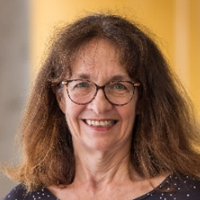
University of New South Wales, Australia
Bio:
Dr. Sisi Zlatanova holds the esteemed position of SHARP Professor within the Faculty of Arts, Design, and Architecture (A.D.A.) at UNSW Sydney, where she serves as Head of the Geospatial Research, Innovation, and Development (GRID) lab. Her academic journey starts with the attainment of a PhD on ‘3D for Urban Development’ from Graz University of Technology, Austria. Her expertise lies in the realm of 3D modelling, with a particular focus on the seamless integration of BIM and GIS, alongside pursuits in 3D Indoor modelling, voxel representations, 3D data management and visualisation. Since recently she started investigating Large Language Models for spatial data search and processing. Collaborating with a dedicated team of researchers, Dr. Zlatanova continually pushes the boundaries of Spatial Digital Twins, enhancing their 3D capabilities for a range of applications.
Her influence extends globally. She holds the position President of Technical Commission IV 'Spatial Information Science' at the ISPRS (2022-2026). She plays an active role in the Open Geospatial Consortium (OGC), notably leading the development of the OGC standard IndoorGML and participating in the work of several ISO standards. Additionally, she is a founding member and regular contributor to several conferences such as Gi4DM, 3DGeoinfo, and Indoor3D. Her contributions to academia are prolific, boasting over 600 scientific publications and the editing of 23 books. She also serves as an associate editor for several high-ranked journals, further solidifying her impact on the field.
Talk Title:
Towards Human-oriented Built Environments
Abstract:
The human perception is a complex interplay of psychological and physiological response to the environments in people work and spent their free time. Rapid urbanisation and the pressure of modern life are frequently identified as sources of chronic stress, contributing to a wide range of physical and mental health issues such as depression, anxiety, and immune dysfunction The quality of the built environment—both indoor and outdoor—has a significant impact on behaviour, social interaction, daily habits, cognitive function, and emotional well-being. It influences decision-making and shapes everyday experiences. Research has shown that confined or poorly lit spaces, as well as dark colours and heavy materials, can elevate stress levels. In contrast, environments incorporating greenery or natural elements are often perceived as calming and pleasant. These findings highlight new challenges for urban designers, architects, geospatial professionals, and system developers to adopt more human-centred approaches in design and planning.
This talk will focus on environmental elements—both indoor and outdoor—that influence human perception and well-being. These elements should be understood broadly, encompassing not only structural features such as the size and layout of rooms, streets, and gardens or the positioning of windows and doors, but also design aspects such as colour, materials, furniture, artwork, and the integration of natural elements. Three studies will be presented, each exploring different approaches to support human well-being and improve the environment. The first study develops parameters for assessing accessibility and usability of green spaces, with a focus on their contribution to phycological and physical well-being. The second, currently in progress, investigates aesthetics parameters to support navigation and wayfinding in hospitals. The third study aims to identify factors that trigger stressful felling when navigating indoors of outdoor in university campus areas. The talk will conclude by outlining a set of common requirements and considerations for professionals to engage them with creating more human-oriented environments.
©2025 GeoHB All Rights Reserved.


 loading......
loading......